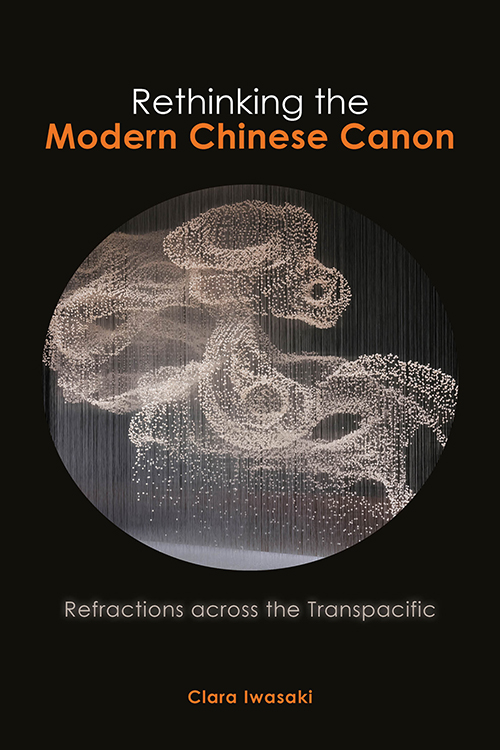Publications
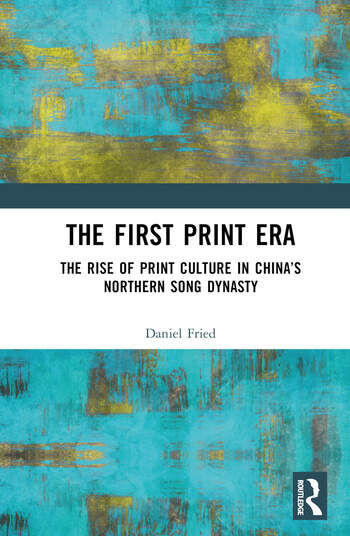
Fried, Daniel. 2023. The First Print Era: The Rise of Print Culture in China’s Northern Song Dynasty. London: Routledge. (Forthcoming)
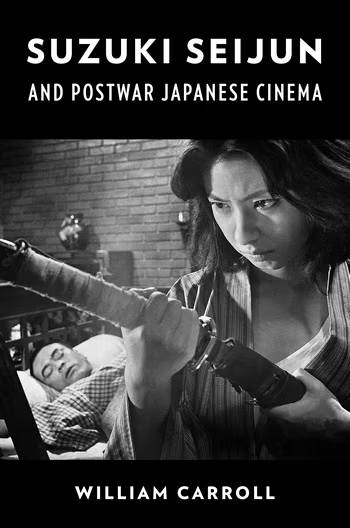
Carroll, William. 2022. Suzuki Seijun and Postwar Japanese Cinema. New York: Columbia University Press.
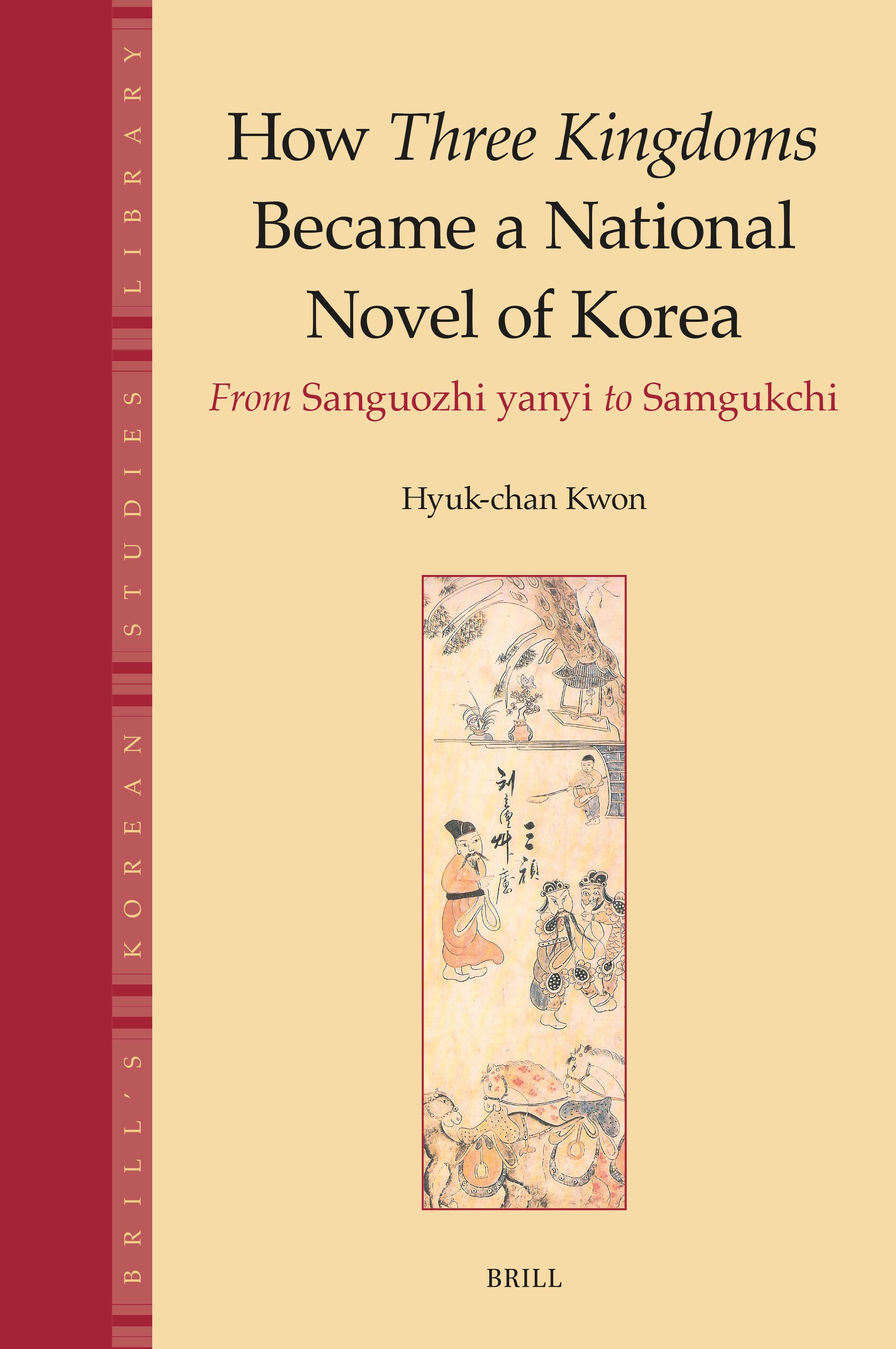
Kwon, Hyuk-chan. 2023. From “Sanguo yanyi” to “Samgukchi”: How Three Kingdoms Became a National Novel of Korea. Leiden and Boston: Brill, 2023.
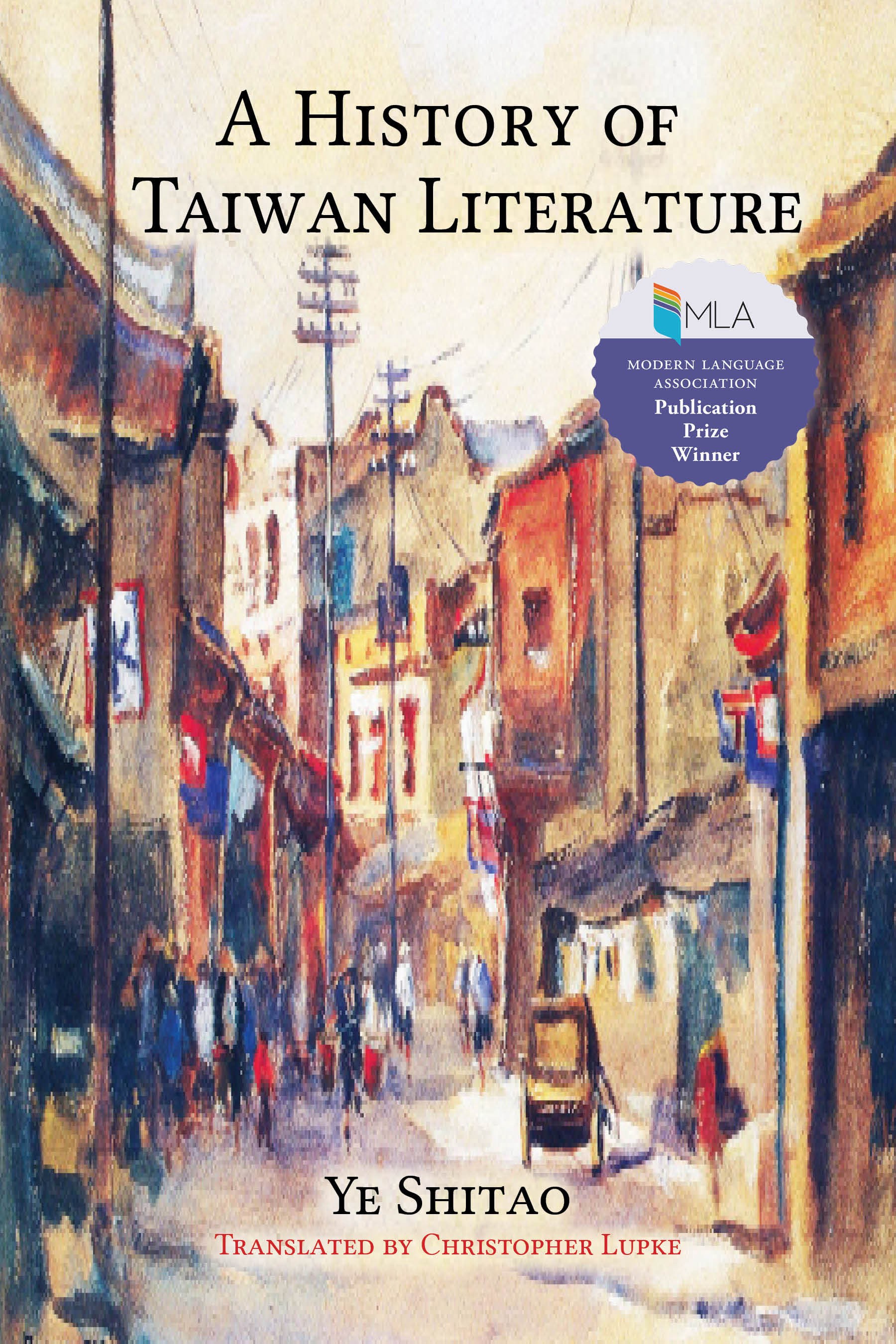
Ye Shitao. 2020. A History of Taiwan Literature. Translated by Christopher Lupke. Amherst: Cambria Press.
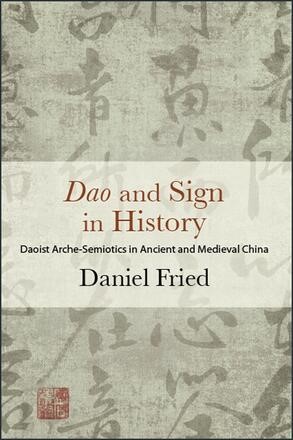
Fried, Daniel. 2018. Dao and Sign in History: Daoist Arche-Semiotics in Ancient and Medieval China. Albany: SUNY Press.
Iwasaki, Clara (2020): Rethinking the Modern Chinese Canon: Refractions across the Transpacific.
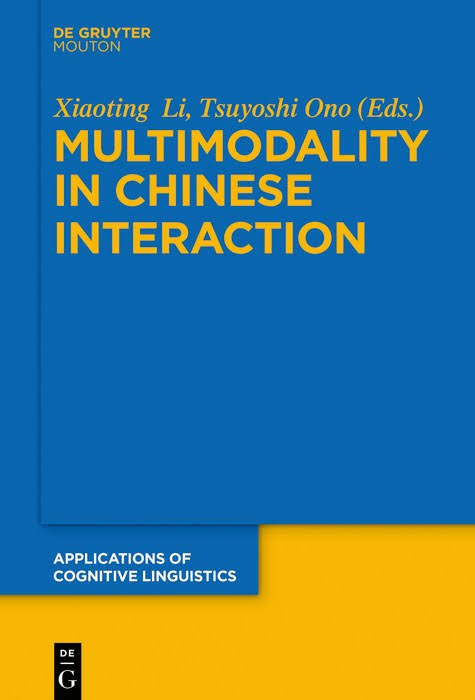
Li, Xiaoting & Ono, Tsuyoshi (eds.) (2019): Multimodality in Chinese Interaction. De Gruyter Mouton: Berlin.

Yao, Shuangyun & Li, Xiaoting. 2022. 互动视角下的汉语口语语法研究 [A Study of Spoken Chinese Grammar from an Interactional Perspective]. Beijing: China Social Sciences Press.
2024
Carroll, William. 2024. "The Lights That Raised Up a Storm: Neon and the Nikkatsu Color Film, 1957-1963." In Global Film Color: The Monopack Revolution at Midcentury, edited by Sarah Street and Joshua Yumibe. New Brunswick, NJ: Rutgers University Press.
Fried, Daniel. 2024. “Conservative Modernizers: The Origins of the Critical Review Group.” In New Vocabularies of May Fourth Studies, edited by Carlos Yu-Kai Lin and Victor Mair. Forthcoming.
Fried, Daniel. 2024. “Towards a New Script Studies” European Journal of Sinology 13: 31-61. Forthcoming.
2023
Carroll, William. 2023. "To See or Not to See: Historical Trauma and the Production of Fear in Contemporary South Korean Horror Cinema." Asian Cinema 34 (1): 65-79.
Dailey-O’Cain, Jennifer, & Sluchinski, Kerry. 2023. “Identity construction through multimodal positioning in intercultural interaction.” In Multimodal Communication in Intercultural Interaction, edited by U. Schröder, E. Adami, J. Dailey-O’Cain. Routledge.
Davis, Walter. Culture in Common: Wang Yiting’s Art of Exchange with Japan. Leiden, Netherlands: Brill, Forthcoming.
Fried, Daniel. 2023. The First Print Era: The Rise of Print Culture in China’s Northern Song Dynasty. London: Routledge.
Kwon, Hyuk-chan. 2023. “‘Come on Tiger’: an Exploration into the Political and Ecological Challenges for Tigers in Premodern and Modern-day Korea.” Postmedieval: a Journal of Medieval Cultural Studies, 14, no. 4 (December 2023). Forthcoming.
Kwon, Hyuk-chan. 2023. From “Sanguo yanyi” to “Samgukchi”: How Three Kingdoms Became a National Novel of Korea. Leiden and Boston: Brill, 2023.
doi: https://doi.org/10.1163/9789004678323
Li, Xiaoting & Liu, Yaqiong. 2023. Interactional functions of truncated predicative complement construction “AP + (dek)le” as topic initiator in Shanghai Wu Chinese conversation. Text & Talk. 43(1): 45-67.
Ono, T. and R. Suzuki. 2023. Establishing a pseudo-cleft construction in Japanese: A perspective from everyday conversation. Lingua 284.
Sluchinski, Kerry. Forthcoming. Inclusivity and Belonging in Chinese Discourse: The case of ‘ta.’ Routledge.
Sluchinski, Kerry. Forthcoming. “Shifting semantics of Grandmother in digital Japanese-Korean Comfort Women Discourses.” In Japanese/Korean Linguistics 30, edited by Sara Williamson, Adeola Aminat Babayode-Lawal, Nicole Chan, Syl-via Cho, and Ivan Fong. CSLI Publications.
R. Suzuki, T. Ono and S. Daiju. 2023. Verb repetition as a template for reactive tokens in Japanese everyday talk. Journal of Japanese Linguistics 39.1:105-124.
Tsuchiya, T., R. Shibasaki, R. Suzuki and T. Ono, eds. 2023. Formulaicity and formulaic expressions in Japanese. special issue, Journal of Japanese Linguistics.
2022
Aoki, Hiromi, Arimori, Jotaro, Roberts, Seiko, Takei, Naoko, & Tanaka, Kaori. 2022. Nihongo Kikusasaizu H5P Listening Exercises (Open Educational Resource for the elementary-level Japanese learners).
Aoki, Hiromi, & Takei, Naoko. Forthcoming. “Teacher’s Professional Development through a Collaborative Project.” Proceedings for the 25th Japanese Language Education Symposium in Europe.
Carroll, William. 2022. "Ju-On's Flavor of Truth: 'True Ghost Stories' and the History of J-Horror." Ju-On: The Grudge Collection. London: Arrow Video.
Carroll, William. 2022. Suzuki Seijun and Postwar Japanese Cinema. New York: Columbia University Press.
Carroll, William. 2022. "Transnational Film in East Asia." Oxford Research Encyclopedia of Asian History (23 March).
Ford, Catherine, Benjamin Tucker and Tsuyoshi Ono. 2022. The status of voiceless nasals in the Ikema dialect of Miyako Ryukyuan. Journal of the International Phonetic Association: 1-18.
Fried, Daniel. 2022. “Rivers to the East: Heidegger’s Lectures on Hölderlin as Prolegomena for Daoist Engagements.” In Daoist Resonances in Heidegger: Exploring a Forgotten Debt, edited by David Chai, 183-202. London: Bloomsbury.
Fried, Daniel. 2022. “Zhuangzi and Laozi: An Intertextual Approach,” In Dao Companion to Zhuangzi, edited by Kim-Chong Chong, 379-404. Cham: Springer. Forthcoming.
Fried, Daniel. 2022. “Zhuangzi’s ‘Three Words’: Text and Authority.” In Dao Companion to Zhuangzi, edited by Kim-Chong Chong, 269-85. Cham: Springer. Forthcoming.
Kim, K. S, Kim, B. G., Kang, J.Y., Kwon, J. M., Park, H. J., & Cho, H. C. (2022). Discover Korean: Korea 102, South Korea: Pagijong Press.
Kim, K. S, Kim, B. G., Kang, J.Y., Kwon, J. M., Park, H. J., & Cho, H. C. (2022). Discover Korean Workbook: Korea 102, South Korea: Pagijong Press.
Lupke, Christopher. 2022. Posthumanism, Temporality, Ecofeminism, Femininity, and Visuality in the Poetry of Zhai Yongming: An Introduction. Rocky Mountain Review 76.1 (Spring): 11-17.
Pekarek Doehler, Simona, Leelo Keevallik, & Li, Xiaoting (eds.) 2022. Grammar-Body Interface in Social Interaction. Special Issue in Frontiers in Psychology. [https://www.frontiersin.org/
Sluchinski, Kerry. 2022. “Im/Politeness variations in digital Japanese-Korean Comfort Women Discourses.” In Japanese/Korean Linguistics 29, edited by Kaoru Horie, Kimi Akita, Yusuke Kubota, David Y. Oshima, and Akira Utsugi, 243–257. CSLI Publications.
Sluchinski, Kerry. 2022. Pronoun TA as a facilitator of empathy in Chinese digital narratives. Chinese Language and Discourse.
2021
Aoki, Hiromi, Arimori, Jotaro, Gillard, Yoriko, Mukai, Yoichi, Roberts, Seiko, Takei, Naoko, & Tanaka, Kaori. 2021. Nihongo Kikusasaizu (Open Educational Resource for the elementary-level Japanese learners).
Carroll, William. 2021. "Composite Corpses and Viruses of Viewing: J-Horror as Film and Media Theory." In Berns, Bhattacharjee, and Saha (eds.) Japanese Horror Culture: Critical Essays on Film, Literature, Anime, Video Games, 113-29. Lanham: Lexington Books.
Li, Xiaoting. 2021. Multimodal practices for negative assessments as delicate matters—Incomplete syntax, facial expressions, and head movements. Open Linguistics 7(1): 549-568.
Li, Xiaoting & Oralova, Gaisha. 2021. Recipients’ words, sounds, nods and gaze—The uses of the minimal response token mm in Mandarin conversation. In Kupetz, Maxi & Kern, Friederike (eds.), 67-90. Prosody and Multimodality. Mannheim: OraLingua.
Lupke, Christopher. 2021. Getting to the Heart of the Matter: Sōseki’s Excursion into the Split Subject and Translation’s Rescue of the Humanities. Rocky Mountain Review 75.1 (Spring): 70-94.
Nicoll-Johnson, Evan. 2021. "Guo Pu Crosses the River: Migration anecdotes in Jinshu biographical narratives,” Journal of Asian Studies 80.1: 99–112.
Nicoll-Johnson, Evan. 2021. “Medieval Bibliographies,” in Literary Information in China: A History. Edited by Jack W. Chen, Anatoly Detwyler, Xiao Liu, Christopher M.B. Nugent, and Bruce Rusk, 483-490. New York: Columbia University Press.
Ono, Tsuyoshi, R. Laury and R. Suzuki, eds. 2021. Usage-based and typological approaches to linguistic units, Amsterdam: John Benjamins.
Quinter, David. 2021. “Eison, Monkan, and the Cult of Founders in Medieval Japan: On the Construction of Narrative and Material Selves in East Asian Buddhism.” Studies in Chinese Religions 7, no. 4: 390-416. https://doi.org/10.1080/23729988.2021.2015147
Quinter, David. 2021. “Visualization/Contemplation Sutras (Guan Jing).” In Oxford Research Encyclopedia of Religion. New York: Oxford University Press. https://doi.org/10.1093/acrefore/9780199340378.013.770
2020
Carroll, William. 2020. "The Unexpected Encounter of Two Parallel Lines: Urban Space in the Films of Johnnie To." Concentric: Literary and Cultural Studies 46 (1): 59-81.
Fried, Daniel. 2020. “Song Dynasty Classicism and the 11th Century “Print Modernity.” In Comparative Print Culture: Alternative Literary Modernities, edited by Rasoul Aliakbari, 23-39. London: Palgrave Macmillan.
Kim, B. G., Kim, K. S, Kang, J.Y., Kwon, J. M., Park, H. J., & Cho, H. C. (2020). Discover Korean Workbook: Korea 101, South Korea: Pagijong Press.
Kwon, Hyuk-chan. 2020. “Confucian Chastity over Authenticity of Feeling: Identity and Emotions in a Rewriting of ‘Du Shiniang Sinks Her Jewel Box in Anger’ in Late Chosŏn Korea.” Ming Qing Studies 2020: 127-144.
Laury, Ritva, Tsuyoshi Ono. 2020. Clause combining in interactional linguistics: A cross-linguistic perspective. Fang, M & Li, X (Eds.). Interactional Linguistics and Chinese Language Studies III. Beijing Language and Culture University Press. 66-113.
Laury, Ritva, Tsuyoshi Ono eds. 2020. Fixed Expressions: Building language structure and social action. Amsterdam: John Benjamins.
Li, Xiaoting. 2020. Click-initiated self-repair in changing the sequential trajectory of Actions-in-progress. Research on Language and Social Interaction 53(1): 90-117.
Li, Xiaoting. 2020. Interpersonal touch in conversational joking. Research on Language and Social Interaction 53(3):357-379.
Ono, Tsuyoshi, M. Sadler and S. Daiju. 2020. Nihongo no nichijookaiwa ni okeru 'kihonteki' tadooshisetsu ['Canonical' transitive clauses in Japanese everyday conversation]. Otani, N, & Nakayama, T (Eds.). Ninchi Gengokaku to Danwa Kinoo Genogaku no Setten [Interface between Cognitive Linguistics and Discourse Functional Linguistics]. Tokyo: Hituzi. 165-182.
Ono, Tsuyoshi, R. Suzuki, 2020. Exploration into a new understanding of ‘zero anaphora’ in Japanese everyday talk. Laury, R & Ono, T (Eds.). Fixed Expressions: Building language structure and social action. Amsterdam: John Benjamins. 41-70.
Ono, Tsuyoshi, S. Thompson, eds. 2020. The ‘Noun Phrase’ across Languages: An emergent unit in interaction. Amsterdam: John Benjamins.
Ono, Tsuyoshi, S. Thompson. 2020. What can Japanese conversation tell us about ‘NP’? Ono, T & Thompson, S (Eds.). The ‘Noun Phrase’ across Languages: An emergent unit in interaction. Amsterdam: John Benjamins. 316–327.
2019
Carroll, William. 2019. "The History of a Broken Blue Fusuma: Colour in Suzuki Seijun's Nikkatsu Films." Cinéma&Cie 32 (Spring): 15-26.
Croizier, Ralph, and Walter Davis. 2003, revised 2019. “Wu Changshi.” In Oxford Art Online. Oxford: Oxford University Press.
Kim, K. S, Kang, J.Y., Kwon, J. M., Kim, B. G., Park, H. J., Cho, H. C., & Lee, H. H. (2019). Discover Korean: Korea 101. Seoul, South Korea: Pagijong Press.
Kwon, Hyuk-chan. 2019. “The Story of Hong Kiltong (Hong Kiltong chŏn) and Its Development into a Hybrid Text.” In A Companion to World Literature, edited by Ken Seigneurie, vol. 3, 1915-1926. Bridgewater, NJ: Wiley
doi: 10.1002/9781118635193.ctwl0158
Laury, R., T. Ono and R. Suzuki. 2019. Questioning the clause as a crosslinguistic unit in grammar and interaction. Studies in Language 43.2: 364–401.
Laury, R., Tsuyoshi Ono. 2019. Usage-based grammar. Kertész, A, Moravcsik, E, & Rákosi, C (Eds.). Current approaches to syntax – a comparative handbook. Berlin: De Gruyter Mouton. 241–262.
Li, Xiaoting & Luo, Jie. 2019. A discourse-interactional study of yinwei ‘because’ in Mandarin conversation. In Xiao, Yun, & Tsung, Linda (eds.) Current Studies in Chinese Language and Discourse, 81-103. Amsterdam/Philadelphia: John Benjamins.
Li, Xiaoting & Tsuyoshi Ono. (ed.) 2019. Multimodality, Interaction and Turn-taking in Mandarin Conversation. Amsterdam/Philadelphia: John Benjamins.
Suzuki, R., Tsuyoshi Ono. 2019. Ninchikeitairon [Cognitive morphology] . Tsuji, Y (Ed.). The Encyclopedia of Cognitive Linguistics. Tokyo: Asakura. 94-104.
Ono, Tsuyoshi, R. Laury and R. Suzuki, eds. 2019. Usage-based and typological approaches to linguistic units. Studies in Language 43.2.
Quinter, David. 2019. “Eison.” In Brill’s Encyclopedia of Buddhism, vol. 2, Lives, edited by Jonathan A. Silk et al., 944-50. Leiden: Brill.
Quinter, David. 2019. “Mañjuśrī in East Asia.” In Brill’s Encyclopedia of Buddhism, vol. 2, Lives, edited by Jonathan A. Silk et al., 591-99. Leiden: Brill.
Quinter, David. 2019. “Moving Monks and Mountains: Chōgen and the Cults of Gyōki, Mañjuśrī, and Wutai.” Studies in Chinese Religions 5, no. 3–4: 391-414. https://doi.org/10.1080/23729988.2019.1689764
2018
Carroll, William. 2018. "'I Don't Masturbate, I Fight!': The Spectre of Kita Ikki in Suzuki Seijun's Fighting Elegy." The Journal of Japanese & Korean Cinema 10 (1): 47-60.
Lupke, Christopher. 2018. Steven Sangren, Filiality, and the Holy Grail of Chinese Anthropology (Review Article). China Review International 23.3 2018 (2016): 209-217.
Nicoll-Johnson, Evan. 2018. "Drawing Out the Essentials: Historiographic Annotation as a Textual Network,” Journal of Chinese Literature and Culture 5.2: 214–249.
Ono, Tsuyoshi, R. Suzuki. 2018. The use of frequent verbs as reactive tokens in Japanese everyday talk: Formulaicity, florescence, and grammaticization. Journal of Pragmatics 123: 209-219.
Quinter, David. 2018. “Mantras and Materialities: Saidaiji Order Kōmyō Shingon Practices.” Japanese Journal of Religious Studies 45, no. 2: 309-40.
Quinter, David. 2018. “Visualization/Contemplation Sutras.” 2018b. In Oxford Bibliographies in Buddhism, edited by Richard Payne. New York: Oxford University Press (Revised version; original 2013). http://www.oxfordbibliographies.com/view/document/obo-9780195393521/obo-9780195393521-0137.xml
By Professors Emeritus
Contemporary Chinese Fiction Writers
Biography, Bibliography, and Critical Assessment
By Laifong Leung
In the years since the death of Mao Zedong, interest in Chinese writers and Chinese literature has risen significantly in the West. In 2000, Gao Xingjian became the first Chinese writer to receive the Nobel Prize for Literature followed by Mo Yan in 2012, and writers such as Ha Jin and Da Sijie have also become well known in the West. Despite this progress, the vast majority of Chinese writers remain largely unknown outside of China.
This book introduces the lives and works of eighty contemporary Chinese writers, and focuses on writers from the "Rightist" generation (Bai Hua, Gao Xiaosheng, Liu Shaotang), writers of the Red Guard generation (Li Rui, Wang Anyi), Post-Cultural Revolution Writers, as well as others. Unlike earlier works, it provides detailed, often first-hand, biographical information on this wide range of writers, including their career trajectories, major themes and artistic characteristics. In addition to this, each entry includes a critical presentation and evaluation of the writer’s major works, a selected bibliography of publications that includes works in Chinese, works translated into English, and critical articles and books available in English.
Offering a valuable contribution to the field of contemporary Chinese literature by making detailed information about Chinese writers more accessible, this book will be of interest to students and scholars Chinese Literature, Contemporary Literature and Chinese Studies.
A Study of Liu Yong and His Lyrics
By Laifong Leung
The Chinese-English combined edition of The Study of Liu Yong and His Lyrics 柳永及其词之研究is Professor Laifong Leung’s new contribution to the study of classical Chinese poetry. Each edition constitutes two parts: the first is devoted to the reconstruction of the life of the Song Dynasty romantic lyricist Liu Yong 柳永 (985?-1053) which was little known; the second part contains five chapters which, by combining quantitative approach with close analysis, explore Liu Yong’s creative use of tune patterns, the poetic worlds of his lyrics, diction and imageries, rhythm and continuity, and structural techniques. A chapter on Liu Yong’s use of poetic closure is also added in the addendum. This 506pp book also includes the map of Liu Yong’s life, notes, appendices, bibliography, and index.
